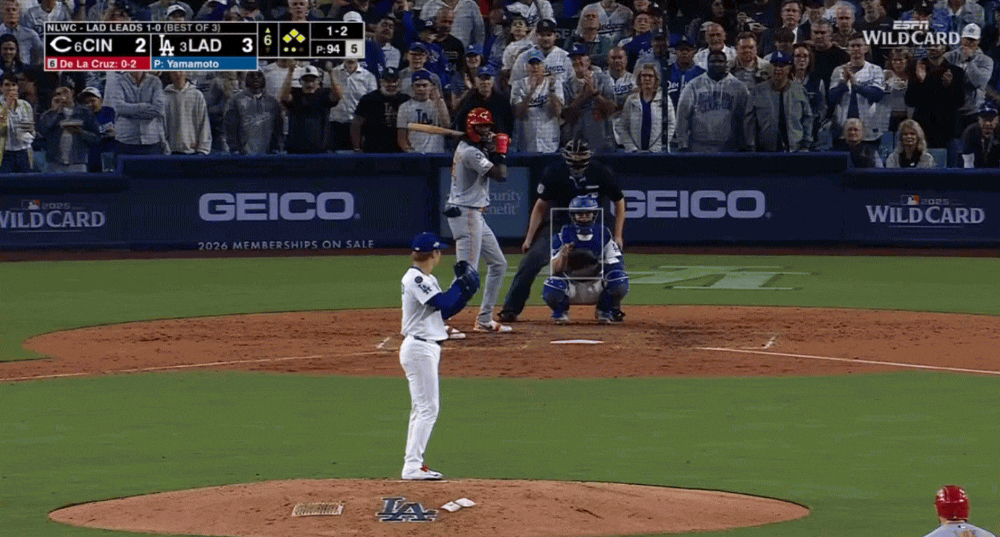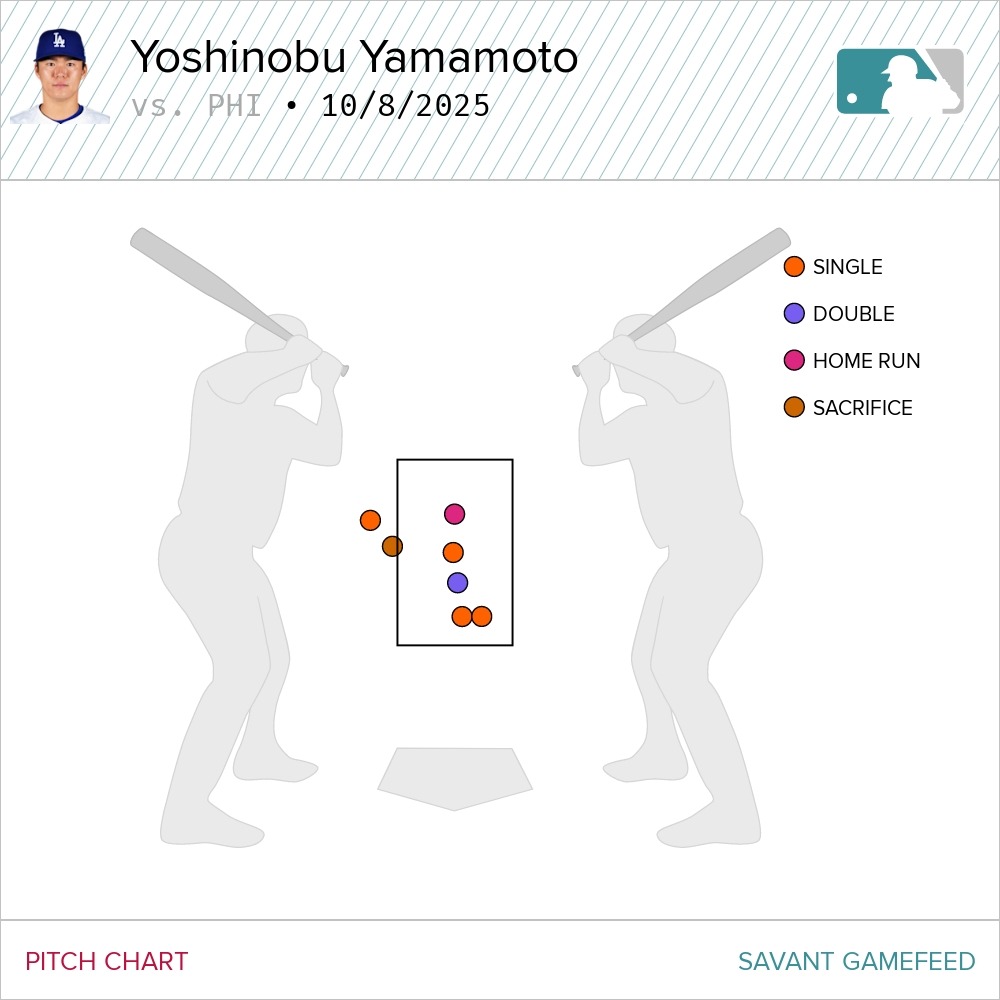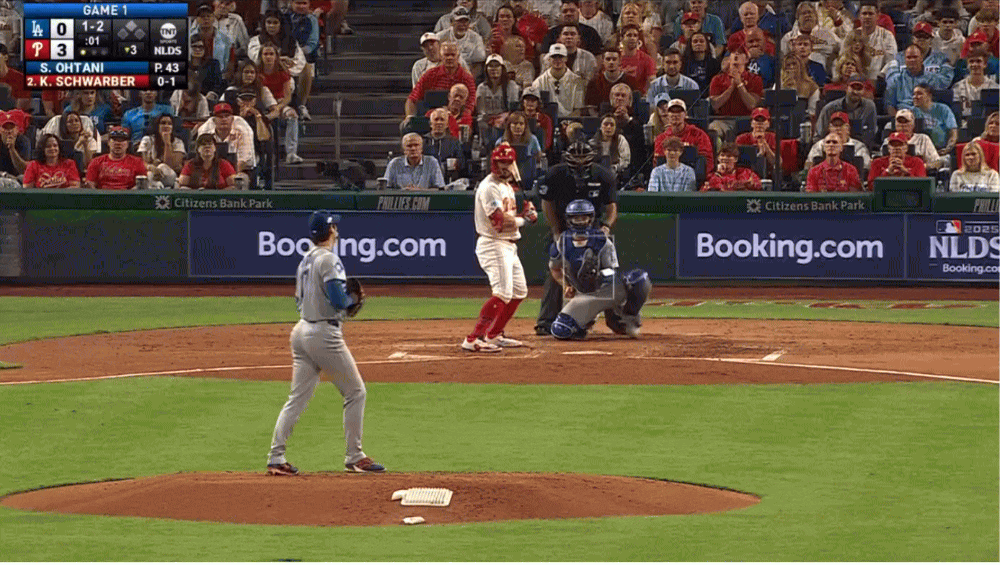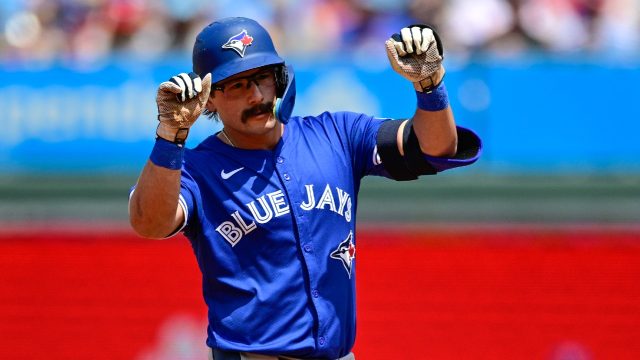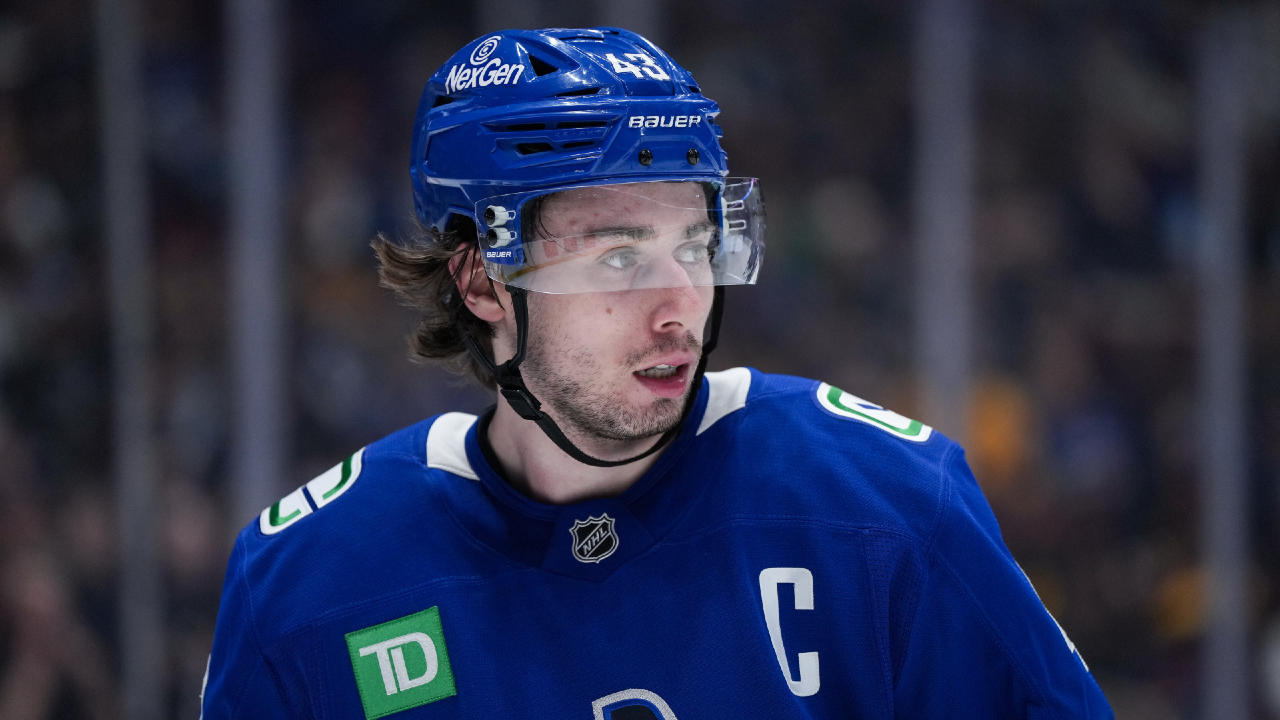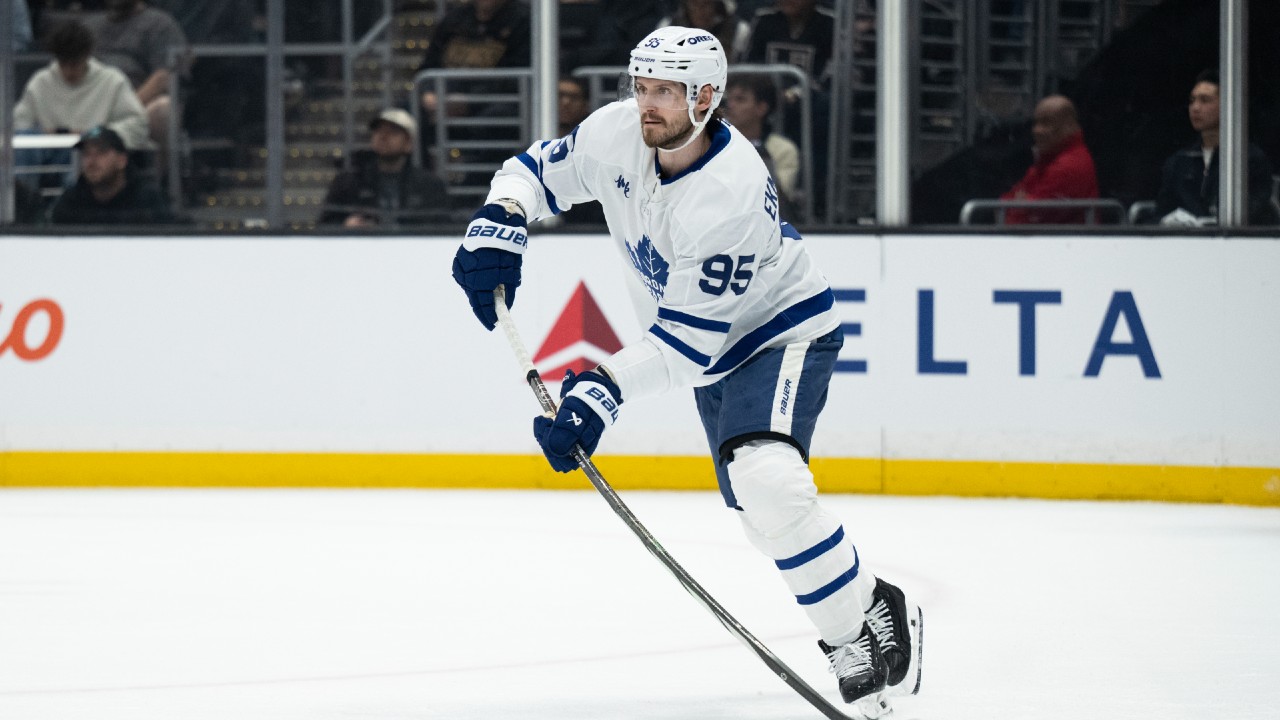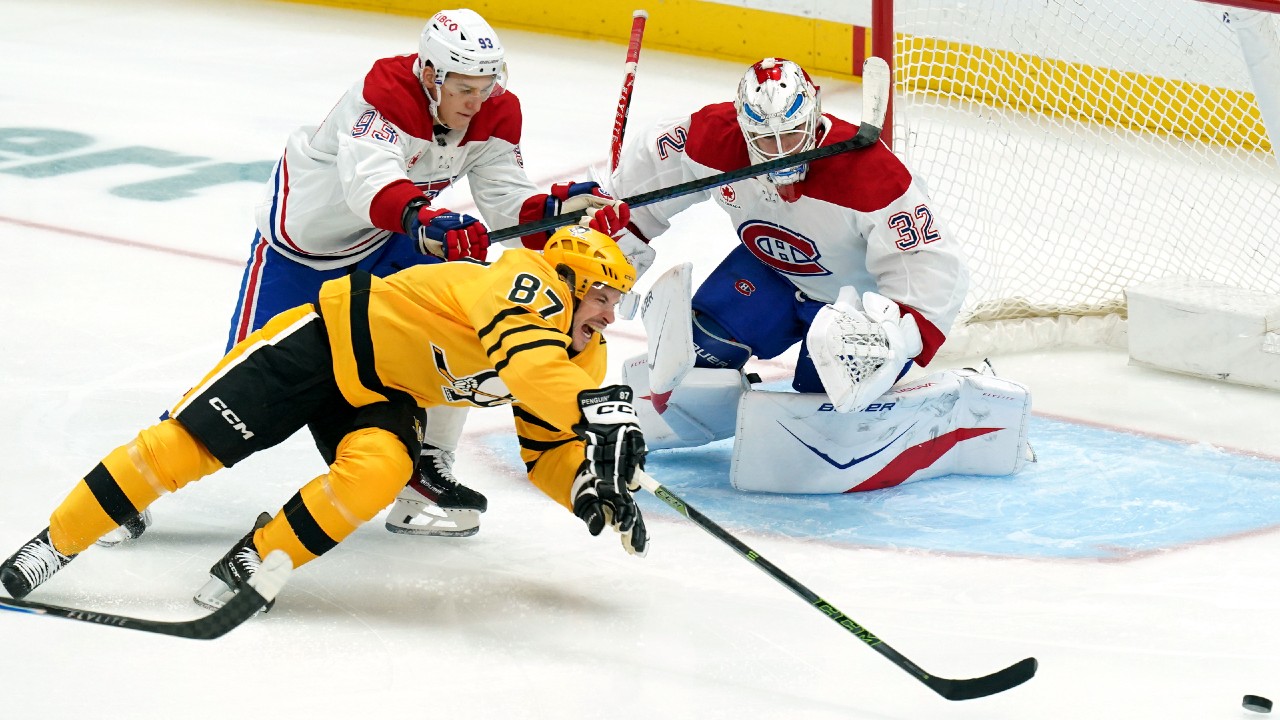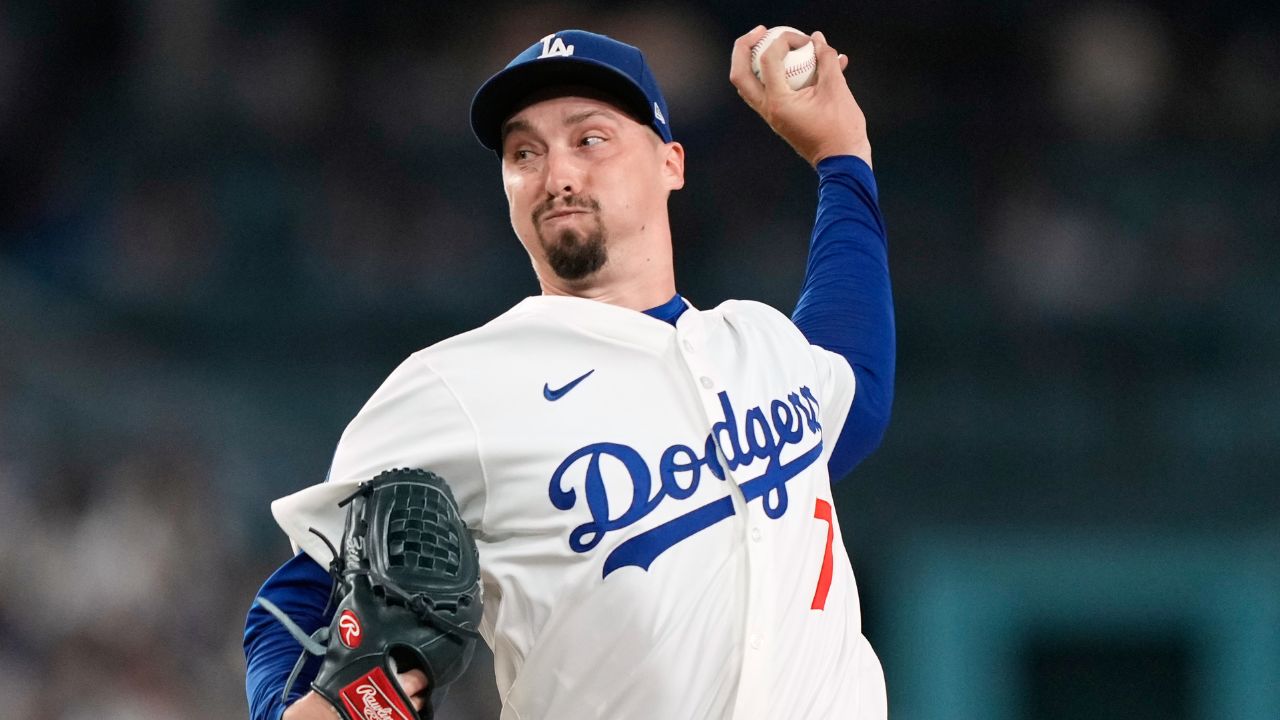
The Toronto Blue Jays’ World Series opponents — the Los Angeles Dodgers — are imposing in several ways, but the toughest test they present right now is their rotation.
Since the first World Series in 1903, 171 groups of starters have pitched 50-plus innings in a playoff run, but just four have produced a rotation ERA below the 2025 Dodgers’ mark of 1.40. Three of those rotations played between 1911 and 1920, so the 1983 Baltimore Orioles (1.31 ERA) are the only remotely modern team to top what Los Angeles has done so far.
It might not surprise you to hear that those Orioles went 7-2 in the playoffs and won the World Series.
To earn a World Series title of their own, the Blue Jays will have to produce more against Blake Snell, Yoshinobu Yamamoto, Shohei Ohtani and Tyler Glasnow than the Dodgers’ National League foes managed.
Understanding the magnitude of that challenge requires a closer look at each starter Los Angeles will throw at the Blue Jays:
Blake Snell
Playoff stats: Three starts with a 12 K/9, 2.14 BB/9, 0 HR/9, 0.86 ERA and 1.09 FIP in 21 innings.
What’s made him so hard to hit in October? Snell has seen a slight velocity boost in the midst of his stellar October, but the biggest adjustment he’s made is a pitch-mix tweak that’s seen his fastball rate drop in favour of more changeups.
|
Pitch |
Four-seam fastball% |
Changeup% |
|
Regular season |
43.6 |
23.6 |
|
Playoffs |
32.1 |
32.4 |
That’s a notable adjustment considering the changeup graded as by far Snell’s best pitch during the regular season. Its Statcast run value (+8) was far higher than the rest of the southpaw’s repertoire combined (+1).
Leaning on the pitch has resulted in plenty of missed bats, but it’s also helped Snell generate harmless contact. The launch angle on the pitch during the regular season was minus-7, and it’s an even stronger minus-11 during the playoffs. That’s helped Snell produce a 69.2 per cent ground ball rate in October.
Snell’s playoff strikeout rate is impressive, but his contact management has been even better. None of the 39 batted balls against him have been barrels, and his average exit velocity against (81.9 m.p.h.) is the best in the post-season among pitchers with at least 10 innings. The second-best number — perhaps surprisingly for Blue Jays fans who watched Game 7 of the ALCS — is Eduard Bazardo at a significantly higher 84.3 m.p.h.
His hits per nine conceded in this post-season (2.57) is the lowest a starter has ever produced in a playoff run, and his WHIP (0.52) is second only to Mike Scott’s in 1986 (0.50). He’s faced 72 hitters in October, and 55 have either struck out or hit a ground ball.
Are there any possible vulnerabilities? Snell has looked nearly invulnerable in recent weeks, with his dominance reaching back into September. Over his last three starts of the regular season, he allowed just one run over 19 innings.
With that in mind, it’s tough to point to a clear weak spot, but Snell is a pitcher who often works outside the strike zone and has been known to struggle with walks.
Cashing in hitters who reach via the free pass won’t be easy, but staying patient could create opportunities — or at the very least drive up Snell’s pitch count enough to force an early exit.
While pure strike throwing isn’t the two-time Cy Young winner’s forte, he prioritizes getting ahead in the count and getting hitters to expand the zone, much like Kevin Gausman. The MLB first-pitch strike average tends to hover around 60 per cent, and Snell has topped 64 in three of the past four seasons, meaning in certain spots, Blue Jays hitters might have success hunting a first pitch in the zone.
Patience and first-pitch aggression are arguably contradictory, but there could be a time and place for prioritizing each in the quest for hits against the red-hot left-hander.
Which Blue Jays hitters might have the best chance to come through?: Davis Schneider’s elite plate discipline could come in handy against Snell, and the Blue Jays’ best two hitters (Vladimir Guerrero Jr. and George Springer) are both capable of either attacking first pitches or working walks.
Yoshinobu Yamamoto
Playoff stats: Three starts with an 8.24 K/9, 1.83 BB/9, 0.92 HR/9, 1.83 ERA and 3.39 FIP in 21 innings.
What’s made him so hard to hit in October? Yamamoto has been consistently fooling hitters during the playoffs, which can be seen in the swing decisions they are making against him.
|
Comparison |
Zone% |
Zone swing% |
O-Zone swing% |
|
Yamamoto |
53.3 |
60.6 |
38.2 |
|
Playoff average |
51.5 |
65 |
31.1 |
Whenever you’re making your opponent passive in the zone and aggressive outside of it, you’re in good shape.
One of the reasons swing decisions against Yamamoto are so difficult right now is that he’s done a masterful job of working the grey areas just outside the strike zone. Here’s a heatmap of his out-of-zone pitches in the playoffs:
Almost everything is competitive as Yamamoto works the bottom of the zone and the corner, and he’s marrying that top-notch command with some nasty stuff.
Yamamoto’s fastball has averaged a sturdy 96.1 m.p.h. in the playoffs, and he has two strikeout pitches in his secondary arsenal, including a splitter that accounted for 90 Ks in the regular season and a curveball with 6.8 more inches of vertical drop than its comparables — MLB’s largest outlier among full-time starters.
That pitch has been particularly tough for hitters lately. They’re slugging .081 against it since the beginning of September with 15 strikeouts. Yamamoto has increased its usage accordingly. His playoff curveball rate (24.7 per cent) is higher than any three-game stretch during the regular season.
The combination of increased velocity, excellent command, a proven whiff-generating splitter and a nasty curveball makes Yamamoto a headache right now — and he has three other pitches we haven’t even mentioned in this summary (cutter, sinker and slider) that are all credible offerings.
Are there any possible vulnerabilities? Of all the Dodgers’ starters, Yamamoto has looked the most hittable in October, even with a masterful one-run complete game in Game 2 of the NLCS.
He’s the only one in the group who had an objectively poor outing, allowing three earned runs in just four innings to the Philadelphia Phillies and leaving too many pitches in the middle of the plate.
That said, he’s also the only starter in the group coming off a full regular season, and during that campaign, he produced a 2.49 ERA and 5 fWAR over 173 innings. There is excellent proof of concept for everything he does.
Yamamoto doesn’t run significant platoon splits, his command and control are both solid, all of his pitches had a Statcast run value of at least +2 during the regular season, and he can finish off hitters in multiple ways.
The best method for getting to the right-hander might be waiting on his fastball. It is his most commonly used pitch, and while its velocity has been good in the playoffs, it doesn’t have many other special qualities. Yamamoto’s heater has approximately average movement and limited spin, and his 52nd percentile extension doesn’t give it much added juice. Stuff+ rates the pitch as a well below-average 91 in his career, although his recent improved velocity and strong location undoubtedly help its effectiveness at this moment.
His fastball rate against left-handers (38.5 per cent) is higher than righties (33 per cent), and might get more chances to do damage, but dealing with Yamamoto isn’t an enviable assignment for either.
Which Blue Jays hitters might have the best chance to come through?: None of Toronto’s left-handed hitters are true fastball hunters, but between the regular seasons and playoffs, the group has been at least respectable against the combination of splitters and curves, which could help them handle Yamamoto’s pitch mix.
|
Hitter |
AVG vs. SF+CB |
SLG vs. SF+CB |
|
Daulton Varsho |
.267 |
.700 |
|
Nathan Lukes |
.270 |
.467 |
|
Andres Gimenez |
.304 |
.429 |
|
Addison Barger |
.224 |
.414 |
Shohei Ohtani
Playoff stats: Two starts with a 14.25 K/9, 3 BB/9, 0 HR/9, 2.25 ERA and 1.22 FIP in 12 innings.
What’s made him so hard to hit in October? After slowly building up over the course of the summer, the two-way sensation is finally at full strength. Both of his playoff starts have gone six innings — a length he reached just once during the regular season — and his velocity is on an upward trajectory.
That graph undersells the increase with his July velocity reading coming from three short-stint outings that spanned four total innings. The velocity he’s working with now as a traditional starter is truly elite. Only two starters topped Ohtani’s current 98.9 m.p.h. during the regular season: Hunter Greene (99.5 m.p.h.) and Jacob Misiorowski (99.3 m.p.h.).
Along with that top-notch heat, Ohtani features six secondary pitches, four of which have generated a whiff rate of at least 40 per cent between the regular season and playoffs. His deadliest weapon in the post-season has been a splitter that he’s earned seven strikeouts with already. Opponents have taken 10 swings against it in October and hit air nine times.
The dominance of that offering has emerged recently, as it was his least-used pitch during the regular season (5.6 per cent).
Ohtani has layered boosted velocity and a resurgent splitter (a pitch he used quite often earlier in his career) on top of a repertoire that was already plenty effective during the regular season.
Are there any possible vulnerabilities? Ohtani’s combination of raw power and diverse arsenal leaves him without glaring weaknesses.
In a small sample during the regular season, right-handed hitters did significantly more damage (.398 SLG) than lefties (.205 SLG), but it’s difficult to claim the righties are in for an easy at-bat against him.
One aspect of Ohtani’s style that is arguably both good and bad news for Blue Jays hitters is that he’s consistently in the zone.
Walks are difficult to come by, but pitches in hittable locations will come around, including misses within the zone. According to Pitching+, Ohtani’s career Location+ is a below-average 93. His 99 during the regular season was slightly better, but he’s not a pitcher who lives on the corners.
His career meatball percentage (9.1 per cent) is above the MLB average (7.3 per cent). Opportunities to do some damage should crop up. Converting on them against his elite stuff is still a tall task.
Which Blue Jays hitters might have the best chance to come through? Aggressive right-handed hitters might be best positioned to have success, which brings to mind Ernie Clement.
Bo Bichette is another name to keep in mind if he’s on the roster. Not only does he fit the description of a righty who attacks pitches in the zone, but his 1.321 OPS against fastballs 97-plus m.p.h. this season was tops among Blue Jays hitters.
Tyler Glasnow
Playoff stats: Two starts (and one relief appearance) with a 12.15 K/9, 5.40 BB/9, 0 HR/9, 0.68ERA and 2.44 FIP in 13.1 innings.
What’s made him so hard to hit in October? It’s never been easy to do damage against Glasnow thanks to his imposing fastball (made all the more intimidating by his 100th percentile extension), and multiple wipeout breaking balls at different velocities.
He’s using his sinker more than he has in years after putting it on the shelf between 2018 and 2023, making him a little more unpredictable, and his four-seamer velo (96.6 m.p.h.) is up a full tick from September, generating a ludicrous amount of whiffs.
|
Split |
Four-seam whiff rate |
|
Regular season |
18.8% |
|
Playoffs |
55.6% |
Glasnow’s slider and curveball are both dangerous offerings with strong vertical movement, but hitting the big right-hander is really about handling the heat.
Are there any possible vulnerabilities? Glasnow’s pitching summary at Baseball Savant tells the story succinctly:
Glasnow’s percentile ranks are well above average in nearly every category except throwing pitches outside the zone that hitters don’t offer at, which leads to plenty of walks.
The Blue Jays are likely to be gifted some opportunities with men on base against the big right-hander, but turning those chances into runs won’t be easy.
Which Blue Jays hitters might have the best chance to come through? The Blue Jays batters best-equipped to take on Glasnow are those who like to hit the hard stuff and can exercise patience.
The hitters who fit that description best are Guerrero and Springer, both of whom have had notable success against the right-hander in the past.
|
Hitter |
PA vs. Glasnow |
AVG |
SLG |
|
Guerrero |
21 |
.353 |
.648 |
|
Springer |
14 |
.462 |
.692 |




